The most successful team in MLS history ended a dismal 2023 campaign as the second-worst performing side in the Western Conference, marking another season where the LA Galaxy would miss out on playoff football.
Greg Vanney joined the Galaxy as their newest head coach in 2021.
After becoming somewhat of a cult hero during his playing career, he intends to bring the Galaxy back to their glory days.
Having completed a domestic treble with Toronto FC in 2017, fans were optimistic and excited as to how Vanney could reinvigorate one of Major League Soccer’s sleeping giants, but the reality of the matter has been far from optimal when it comes to their performances on the pitch.
Plagued by injuries and financial sanctions, the Galaxy have consistently failed to provide a full-strength squad that matches the footballing principles that Vanney aims to employ.
However, 2024 has emerged as a standout season in which Vanney has finally got things clicking, with full control over his signings and everyone buying into his possession-based style.
Whilst things have not exactly been smooth sailing for the Galaxy, they have developed into a dangerous team both in and out of possession.
They are sitting atop the Western Conference with a real belief that they can take on anyone who stands in their playoff path.
The incoming arrival of German football legend Marco Reus only adds to the excitement emanating from Galaxy fans, adding another star attacker to a side that has had little problem finding the back of the net.
This LA Galaxy tactical analysis will begin to address some of Greg Vanney tactics so far this season, with our analysis highlighting their strengths but also addressing the ways in which the Galaxy have found themselves being too vulnerable for Vanney’s liking.
Greg Vanncy Tactics & Formations
Greg Vanney really seems to have finally found a way for his team to express their individual talents whilst matching the overall team identity that the Galaxy are trying to build; it is evident when observing their matches against some of the toughest opposition in the MLS.
Vanney’s style of play allows the Galaxy to dominate possession but focuses on working the ball around quickly with attacking intent.
This is highlighted by the fact that they boast the third-highest average possession in the MLS, with 56.2%.
LA Galaxy have utilised the 4-2-3-1 formation throughout this season, and we can see their double pivot dropping extremely deep to demand the ball in the early phases of their build-up play.
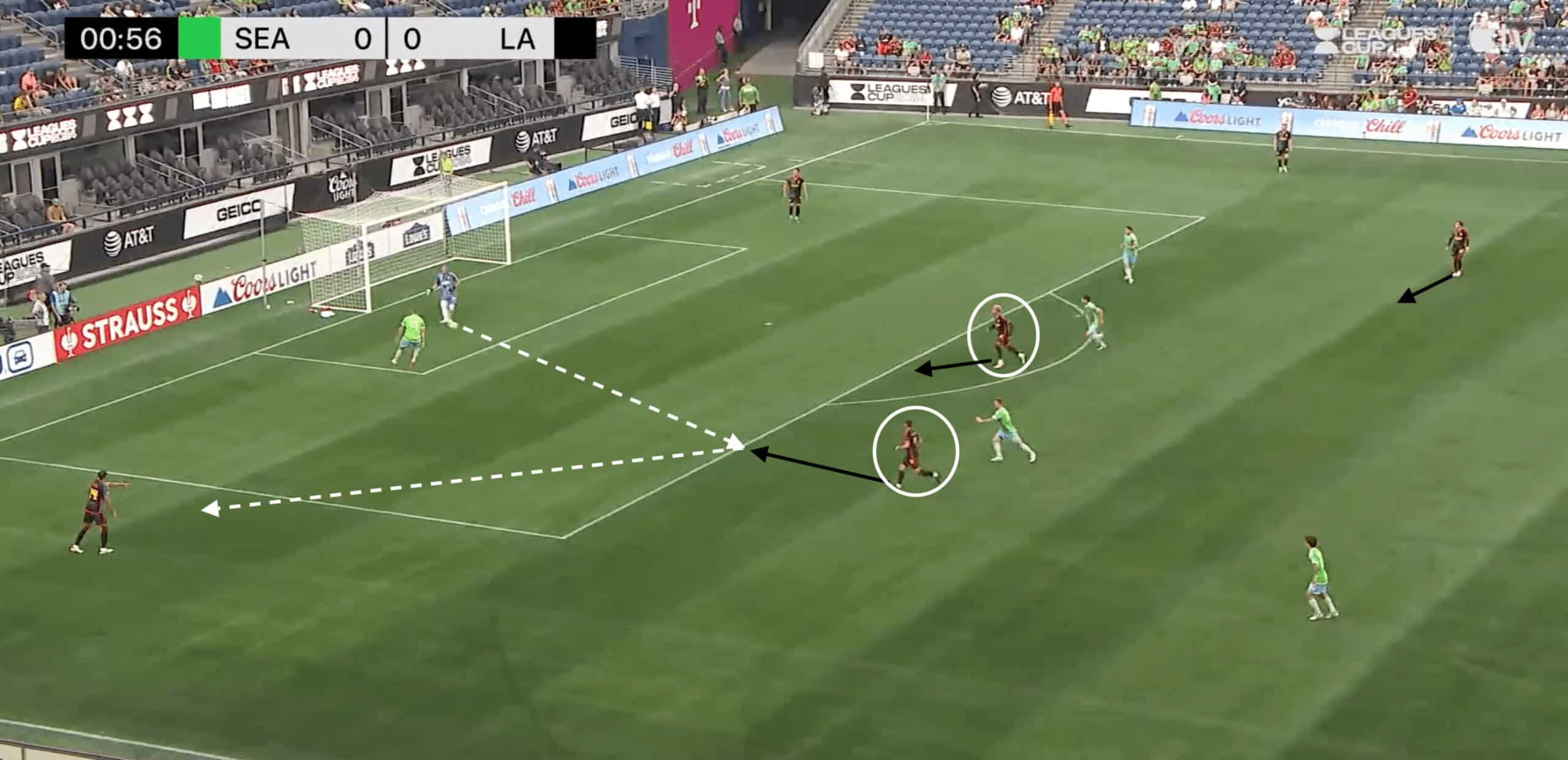
Their midfield shape can also morph into more of a 4-3-3 at times, with Riqui Puig dropping in from his number 10 role to support both Edwin Cerrilo and Marco Delgado on this occasion.
The trio is very much fluid in their responsibilities and positioning through the central areas.
In order to be effective in the attacking phase, Greg Vanney wants his wingers to stretch the field and take advantage of the explosive nature of their two attacking designated players, Joseph Paintsil and Gabriel Pec.
They both possess skillsets that create a world of problems for defenders in the MLS.
They are perfect when taking advantage of the Galaxy’s ability to threaten their opponents in transition, with frequent opportunities crafted from their solid defensive platform, springboarding their attacking sequences into life.
Highlighted here with their opening goal against the San Jose Earthquakes, the pair have developed a strong partnership and have become wise to each other’s decision-making in the final third.
Perhaps only Joseph Paintsil is able to match the speed of Pec’s attack and convert his excellently waited through ball when exploiting San Jose’s poor defensive structure.
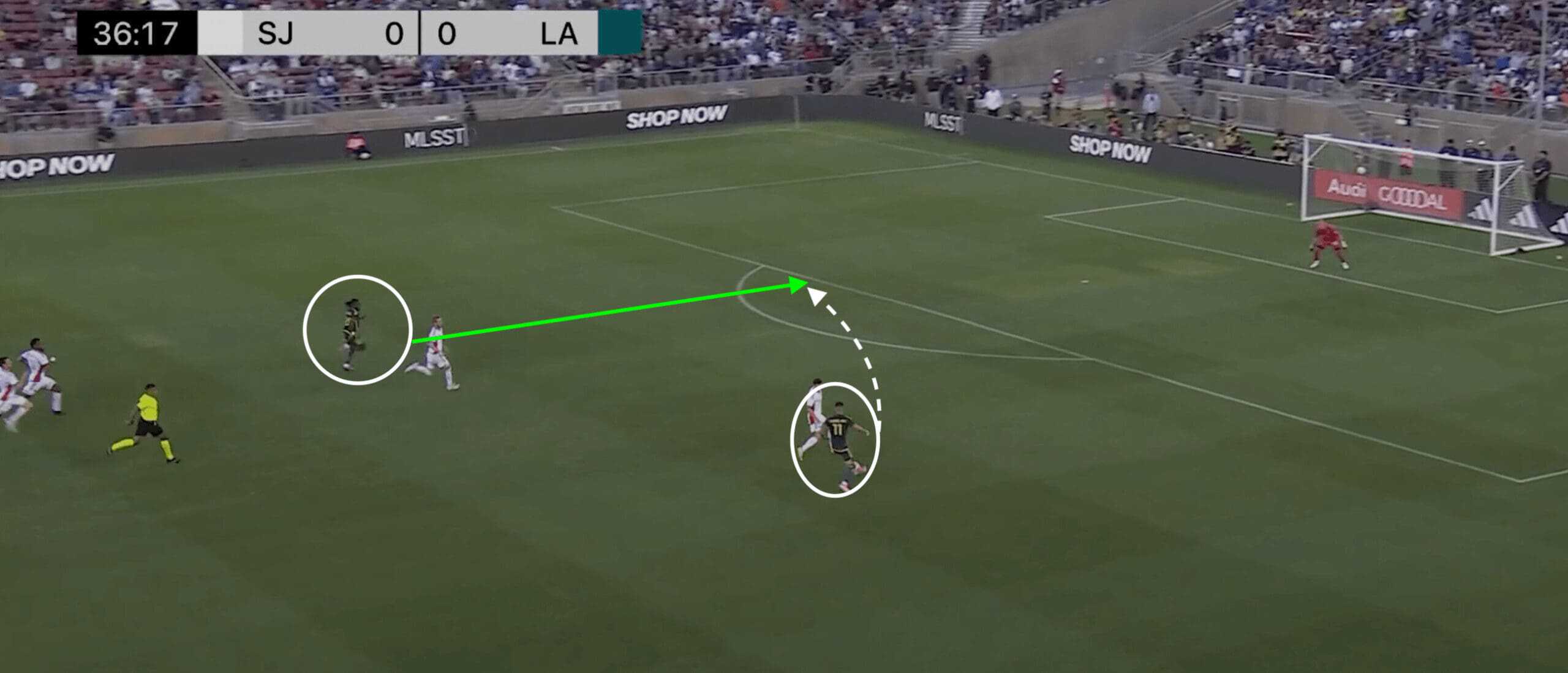
When not attacking in transition, Greg Vanney identified issues early in the season where Gabriel Pec’s explosive nature would be wasted when hugging the touchline on the right flank, unable to affect the game to his manager’s liking.
This is why we often see Japanese full-back Miki Yamane incredibly high on the right flank instead.
This position allows Pec to float into more centralised areas and use his technical prowess to create rapid passing combinations with his striker and attacking midfielders.
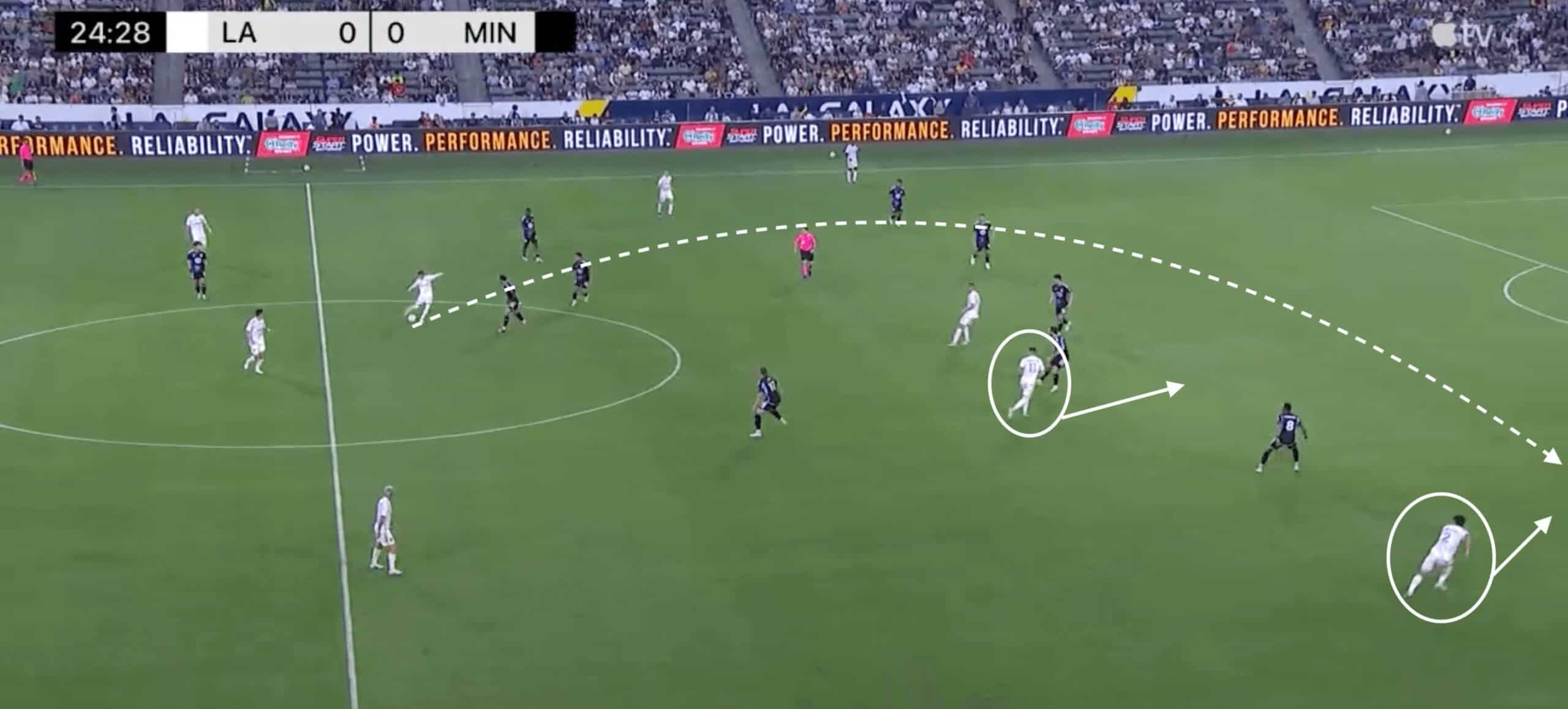
LA Galaxy’s second goal in their game against the Vancouver Whitecaps perfectly encapsulates the type of attacking football that Greg Vanney has been able to craft this season, with more emphasis on attacking overloads and capitalising on the subsequent space that they create.
Paintsil moved across to the right-wing later in the game and hugged the touchline, allowing the Galaxy to be more inventive with the movement of left-back Julian Aude.
The Argentine made an inverted run to overload the right side of the Vancouver defence.
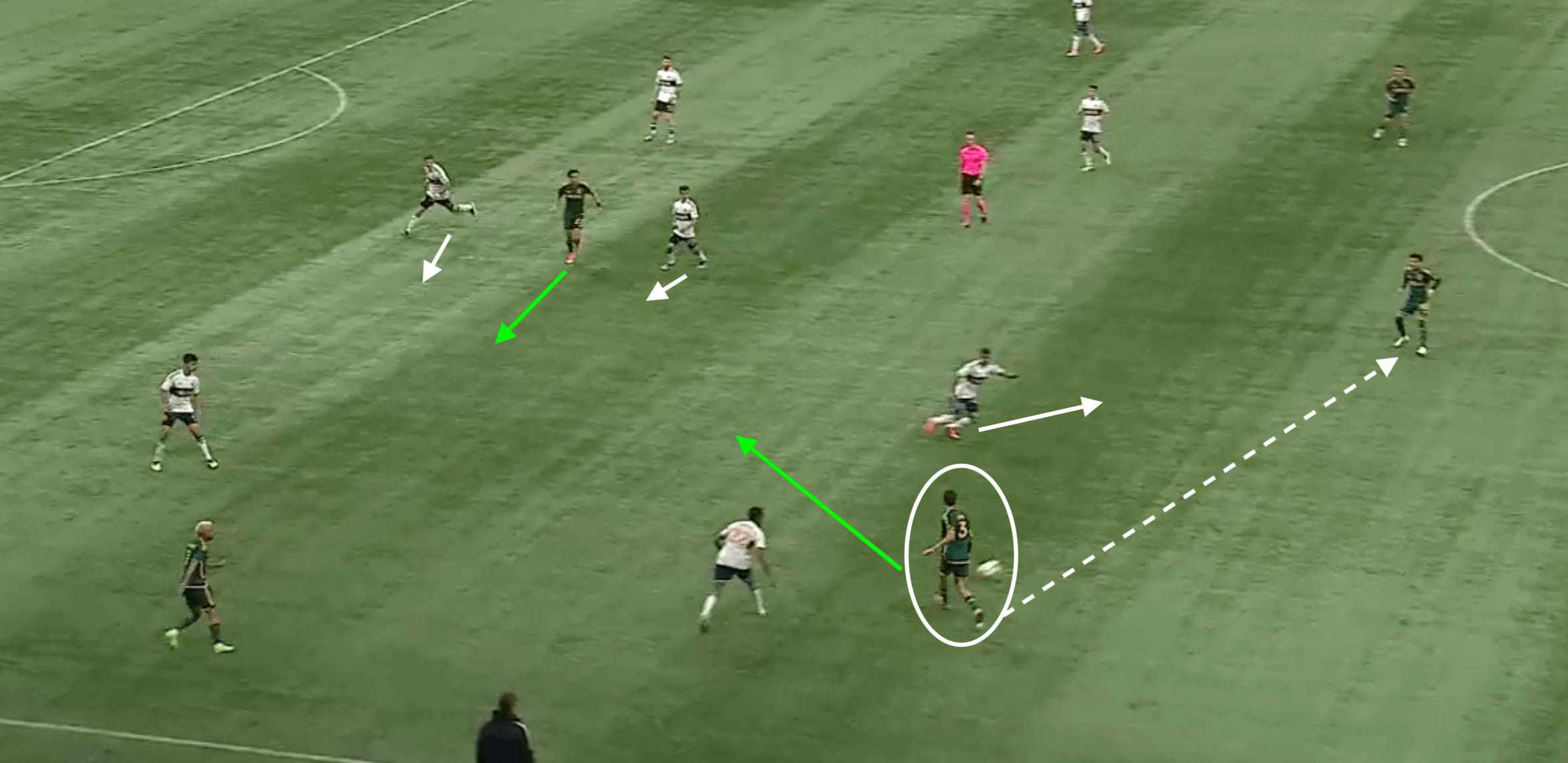
Their overload was strengthened by Miguel Berry’s positioning, drifting across to pull the Vancouver defenders out of shape.
This allowed Riqui Puig to play a perfectly timed through ball into the onrushing Paintsil, with the Ghanaian crashing into the penalty area and converting from close range.
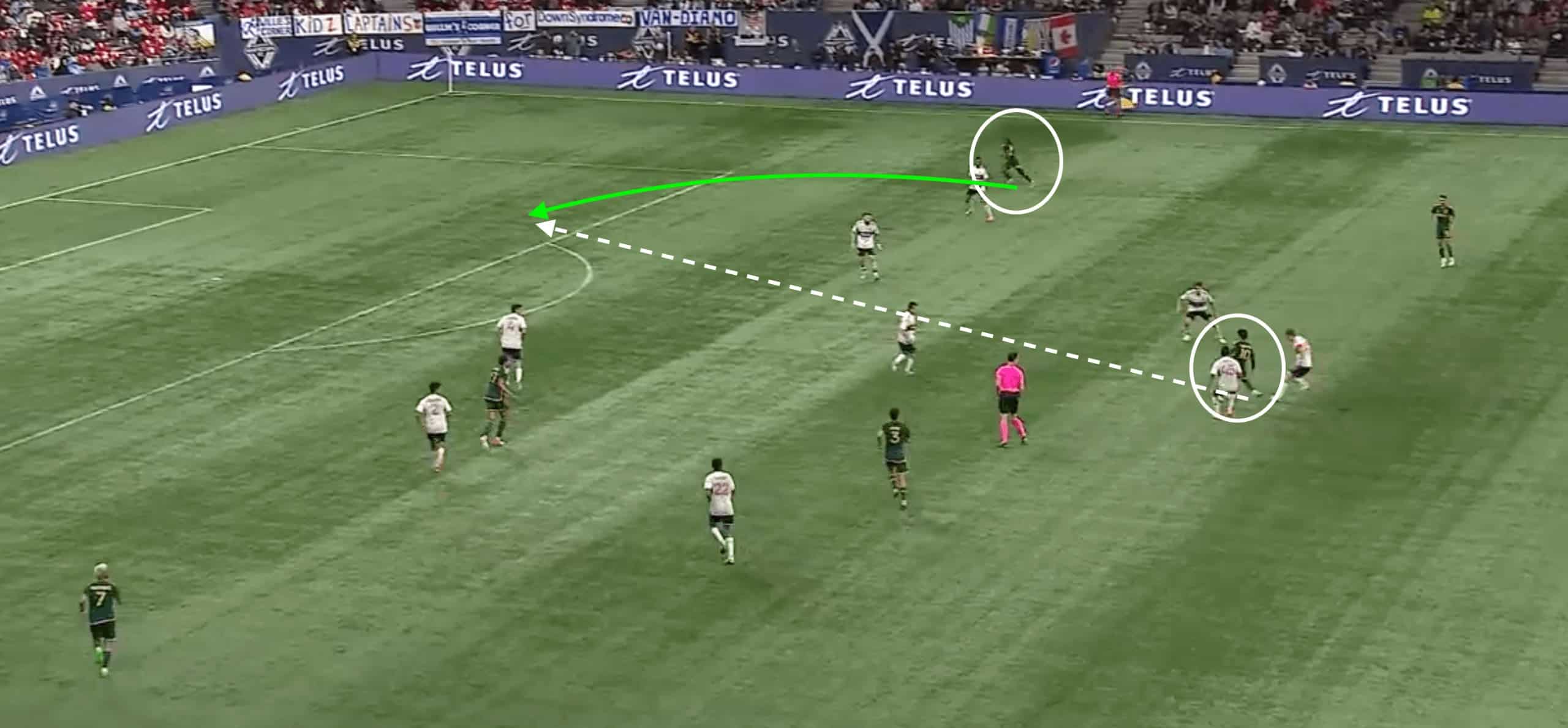
Problems With Riqui Puig
It may come as a surprise that a La Masia graduate in the form of Riqui Puig can be spoken about in a negative light, especially when viewing his underlying figures as a progressive maestro for this Galaxy side.
Puig ranks within the top 1% of MLS midfielders for progressive passes per 90 with 14.23, along with the 6.08 shot-creating actions per 90, further conveying his attacking importance within Vanney’s side.
However, the problem during Vanney’s tenure has been finding the perfect balance between Puig’s high-octane transition play and his head coach’s desire to become more of a cohesive team and spread the ball around when in possession.
Riqui Puig can take your breath away with his desire to drive up the pitch and ignite the Galaxy’s transitional play, having performed 4.62 progressive carries and 4.10 take-ons per 90 this season.
Although, it remains an issue that the dynamism of Puig has come at a detriment to the defensive stability of LA Galaxy, with his desire to commit bodies forward with his rapid playstyle leaving gaps exposed when he is dispossessed- which is an all-to-frequent occurrence for Vanney’s liking.
Puig’s natural instinct to drop deeper to pick up the ball and dominate possession has left the Galaxy in some tricky spots this season, as the Spaniard ranks within the 2nd percentile for ball losses across all MLS midfielders this season (1.65 per 90)- and crucially for Puig, they often occur when the opposition provides extra interior players to snuff out potential sequences he might look to instigate.
Take, for example, LA Galaxy’s match against St. Louis City.
We can see Puig almost dropping into central defence to demand the pass from Cerillo despite the presence of both St. Louis forwards and the onrushing central midfielders pressing high up the pitch.
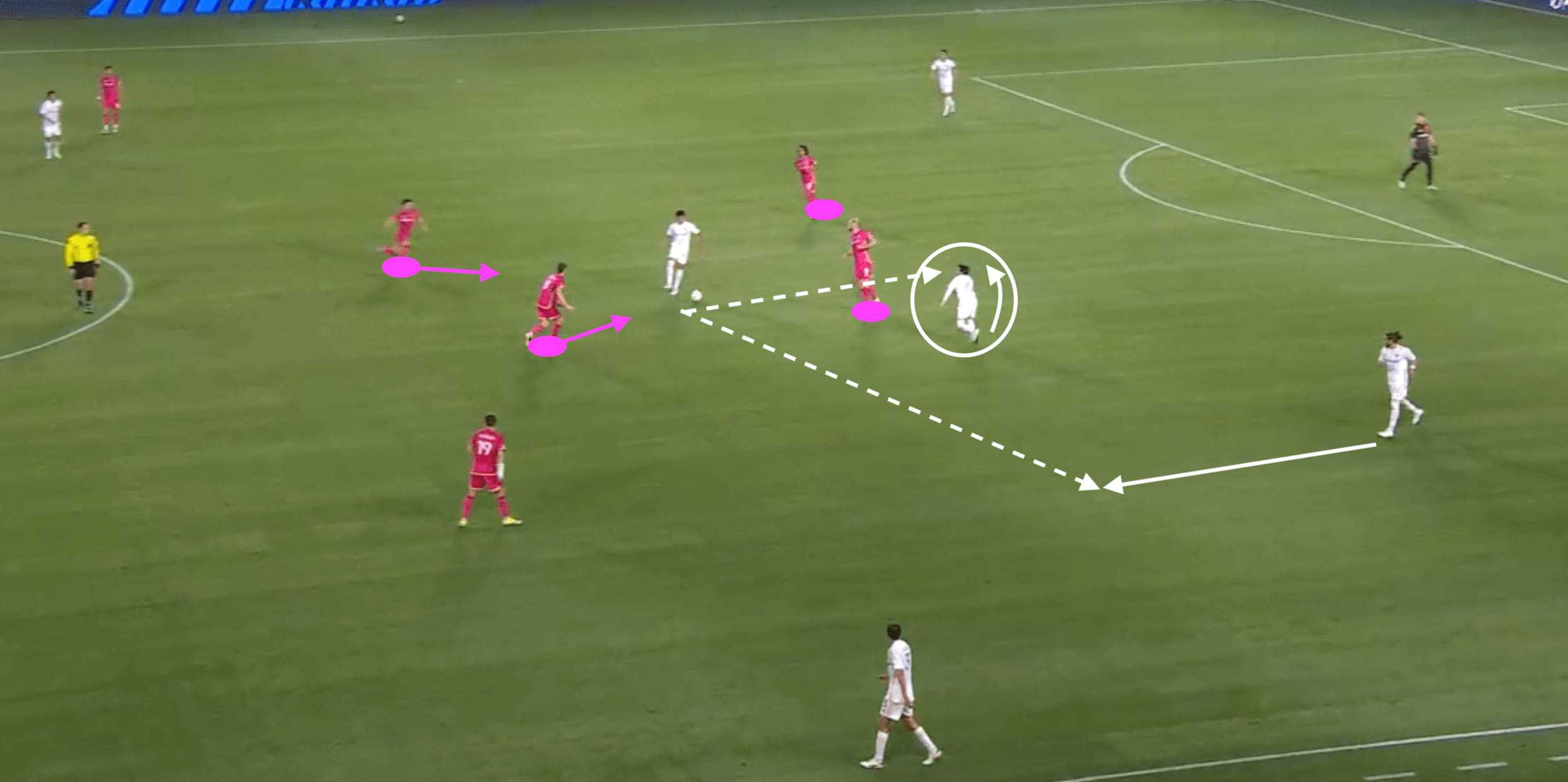
Whilst this was an overall scruffy sequence from the Galaxy, an outlet ball towards Cáceres out wide could’ve potentially relieved the danger and allowed Vanney’s side to maintain their advantage- but instead, Puig was overwhelmed and St. Louis were able to equalise from their high turnover.
It begs the question of whether Puig can tone down his own style for the greater good of the team (something that ultimately led to his exit from Barcelona all those years ago).
Vanney could potentially have him drop deeper permanently when Marco Reus arrives at the Galaxy to occupy the attacking midfield role.
Puig has certainly shown glimpses of how he can function well in Vanney’s system, highlighted in their most recent match with the Seattle Sounders.
The Spaniard played an inch-perfect through ball, unlocking the defence and allowing Gabriel Pec to score the team’s only goal.
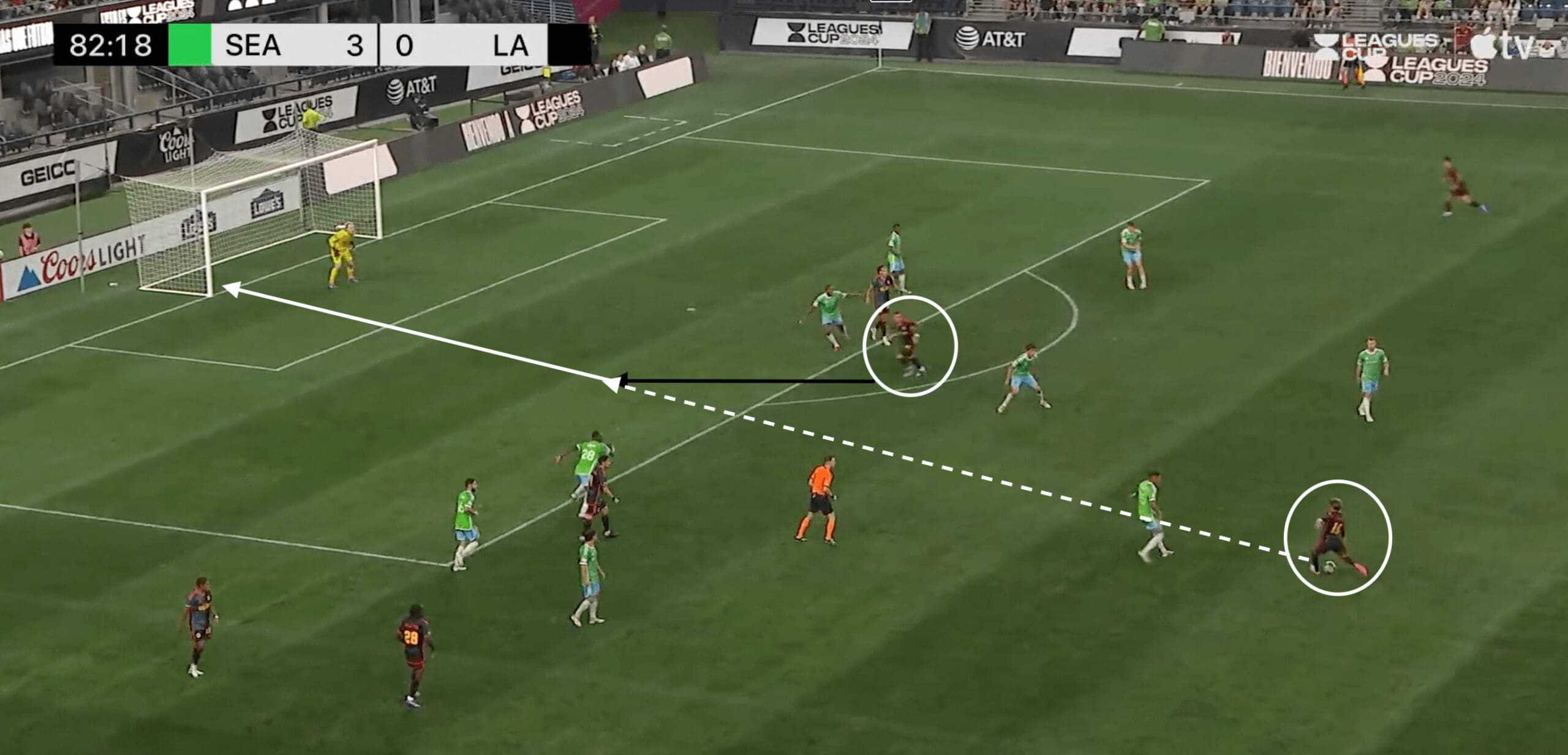
It signifies their attacking intelligence and team harmony when they work the ball around the pitch at such a fast rate, but can Puig alter his playstyle so that it reduces the negative effects on the defensive structure that the Galaxy have worked so hard to improve throughout this year?
Mixed Defensive Fortunes
Unfortunately, throughout Vanney’s time at LA Galaxy, resolute defensive performances have been somewhat of a rarity, with the Galaxy focusing on out-soring their opponents in order to get all three points.
But this year, Vanney and the LA Galaxy team have worked hard to bring about a moment of change, making them a much more settled side when out of possession- highlighted by the fact that they have conceded just 36 goals from 42.5 xGA in the MLS.
Their defensive shape is centred around close proximity between the defensive and midfield lines, where they can then look to counter-press as quickly as possible.
However, this plan often falters when not all the Galaxy players on the field completely buy-in.
One reason this plan implodes is that the defensive line feels the need to protect their defensive shape because of an increased threat in transition—often stemming from the Galaxy midfield ceding possession when being too adventurous with the ball.
In their match against Portland Timbers, we see a lacklustre effort from members of the Galaxy midfield when attempting to stop their opponent’s transition play, but are ultimately protected by the resolute defensive line who had dropped off when recognising the potential threat.
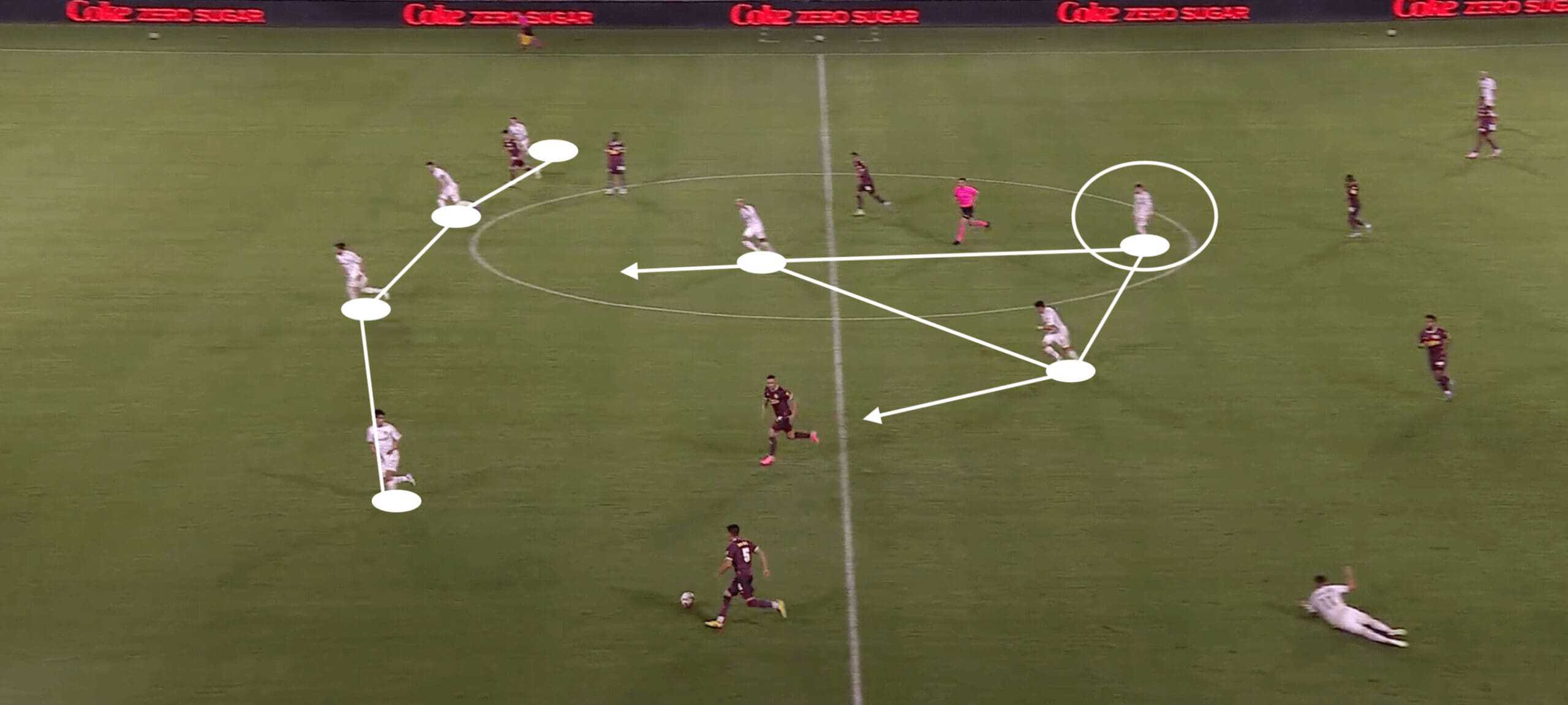
The Galaxy are often having to compromise their intent to counter-press and operate at a higher depth in order to maintain a defensive line with minimal gaps to exploit, in turn reducing their ability to progress the ball quickly and to the necessary offensive facilitators.
This would explain their current below-average challenge intensity (4.5) and one of the lowest PPDA figures in the MLS (14.26).
It may seem harsh to keep highlighting Riqui Puig’s defensive contributions, but it is astounding what the Galaxy can do when they have all ten outfielders working in tandem in their pressing efforts.
This was highlighted by their impressive high-pressing efforts when Puig was omitted from their lineup against Seattle Sounders.
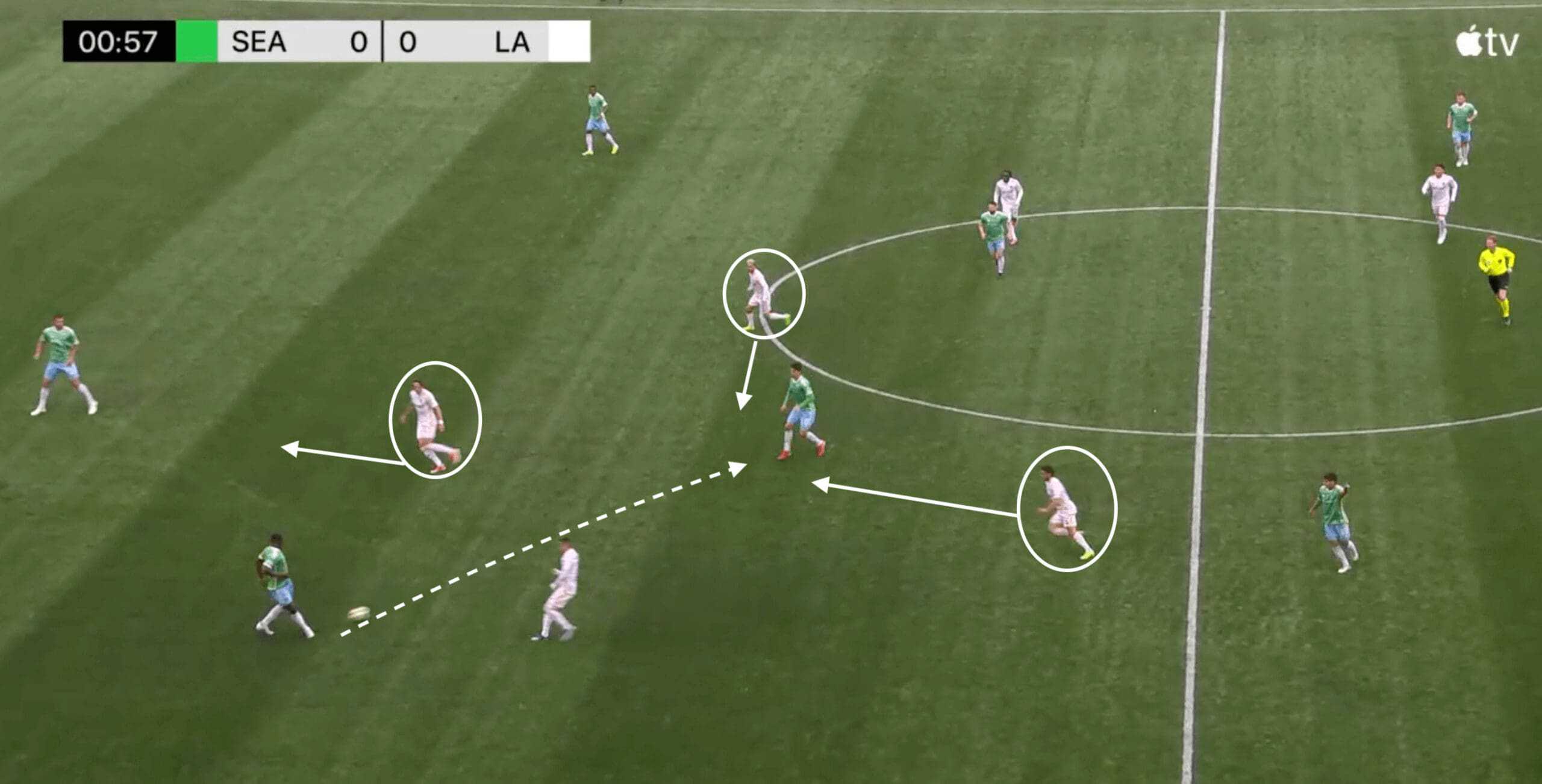
One way the Galaxy have been able to play with a higher defensive line is by utilising Jalen Neal and Maya Yoshida as their central defensive partnership.
With a combined age of 72, the usual partnership of Cáceres and Yoshida often lacks the physical attributes associated with deploying a higher line and being proactive in their defensive positioning.
Jalen Neal has allowed himself and Yoshida to operate much higher up the pitch.
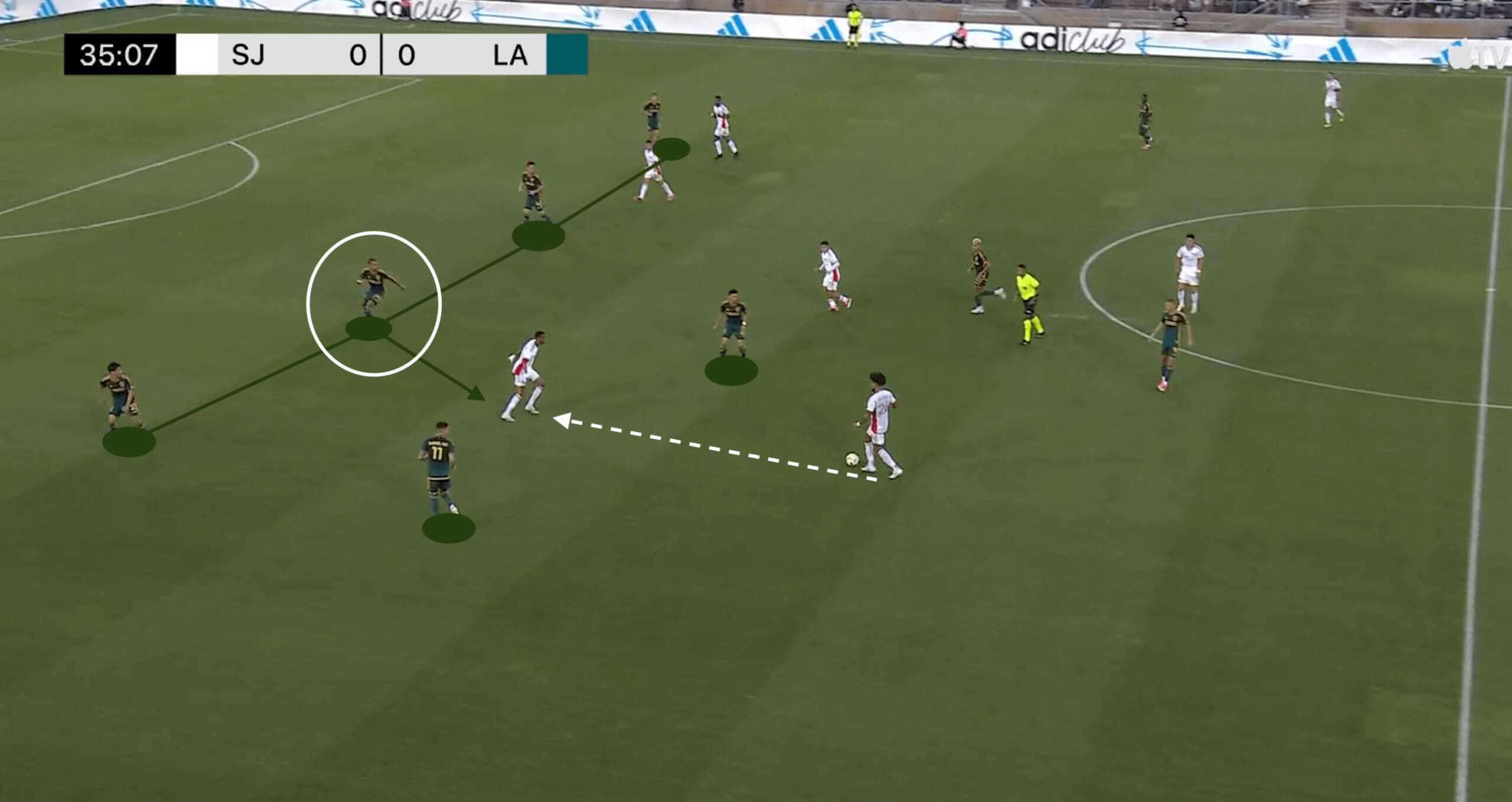
We can see Neal stepping up towards the opposing midfield to cut out passes between the lines, providing the necessary platform to create dangerous transitions.
With the business end of the season on the horizon, Vanney will look to fine-tune his defensive system and look to negate some of the issues which see the Galaxy appearing so vulnerable against their playoff contenders.
Conclusion
A fascinating insight into the LA Galaxy has allowed us to investigate the ways in which Vanney has been able to extract the best out of his new players in 2024, with the free-firing Galaxy desperate to taste playoff success after such a long drought.
The mouth-watering signing of Marco Reus will only add to the attacking firepower that the Galaxy hold, but it will be interesting to see how Reus can integrate into a side which has dominated the MLS with their rapid attacking sequences and one-touch football.
For fans of the Galaxy, whilst there is still a long way to go before they could potentially have their hands on the MLS Cup, it seems as though we are finally seeing Greg Vanney’s tactical innovation coming to fruition on the West Coast.

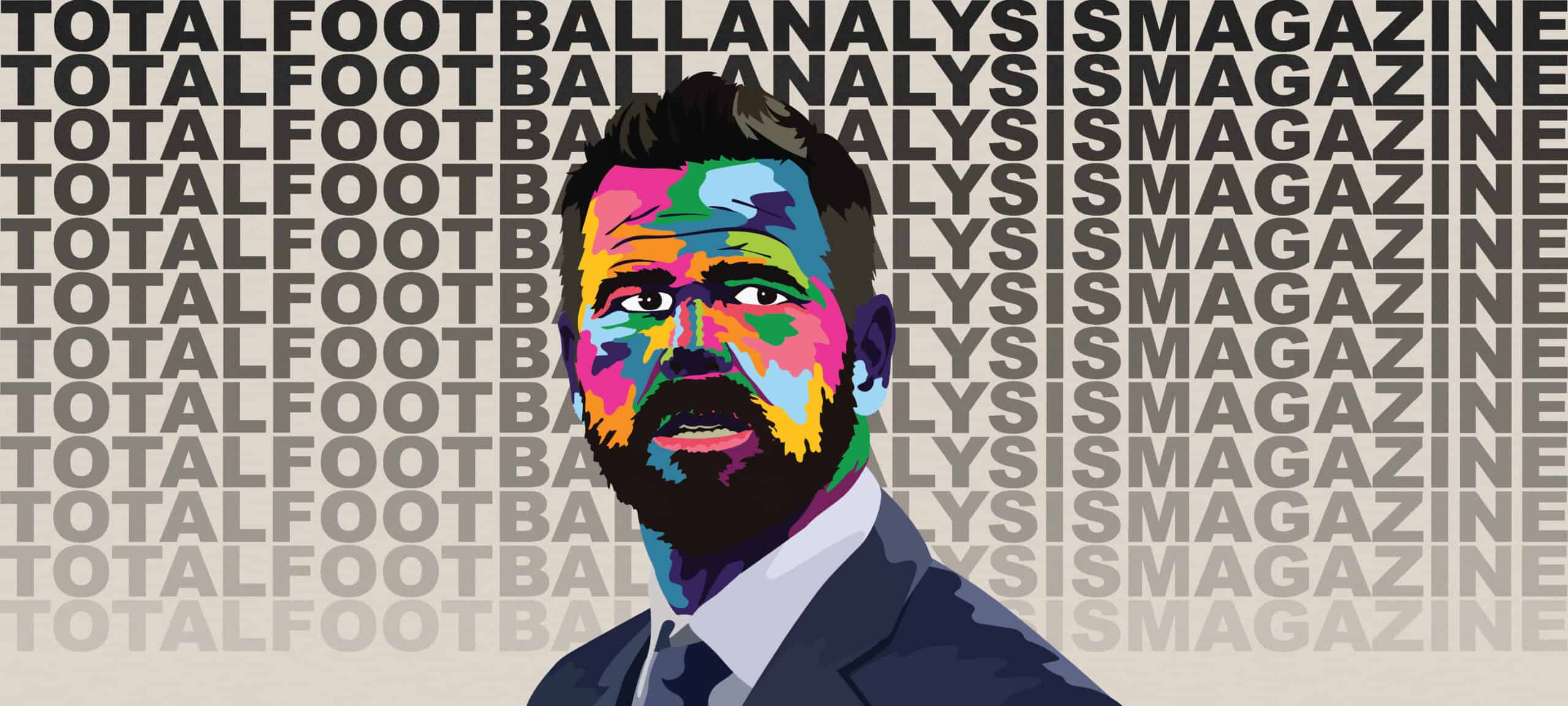



Comments